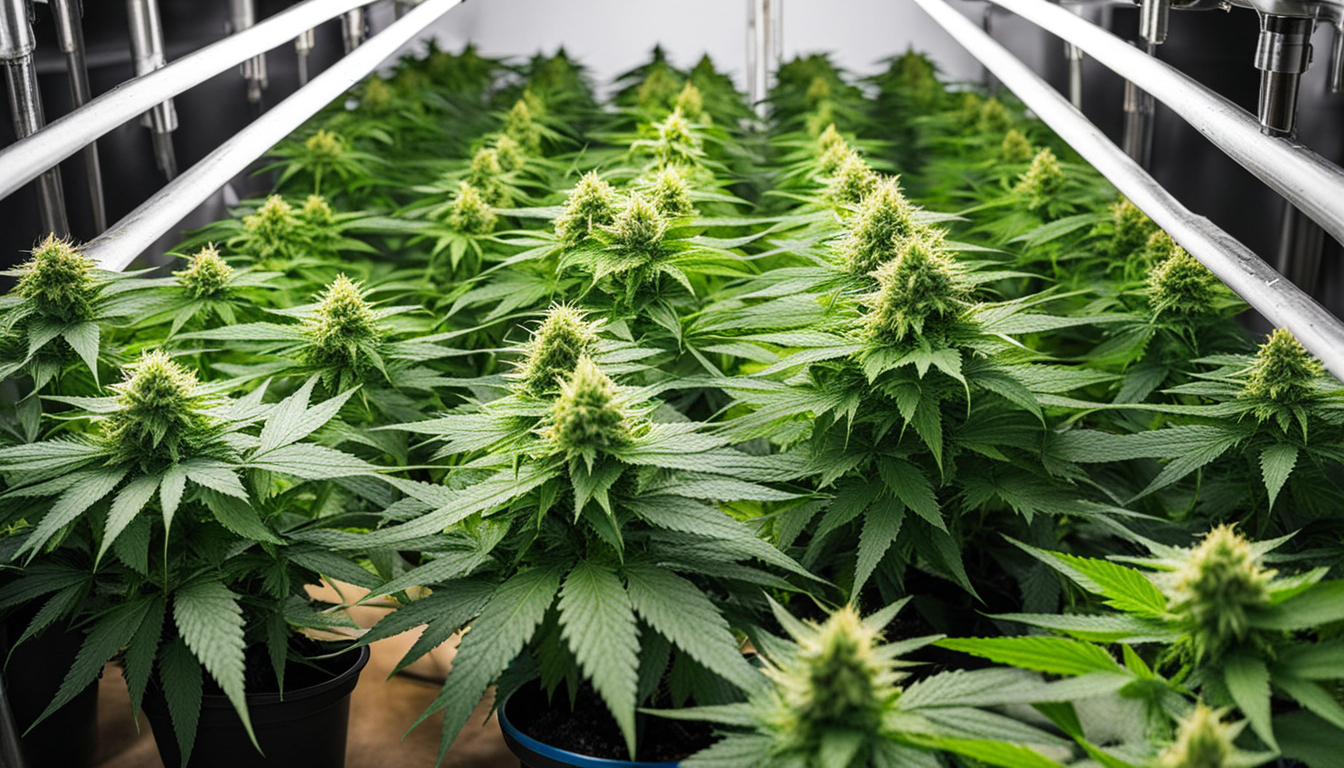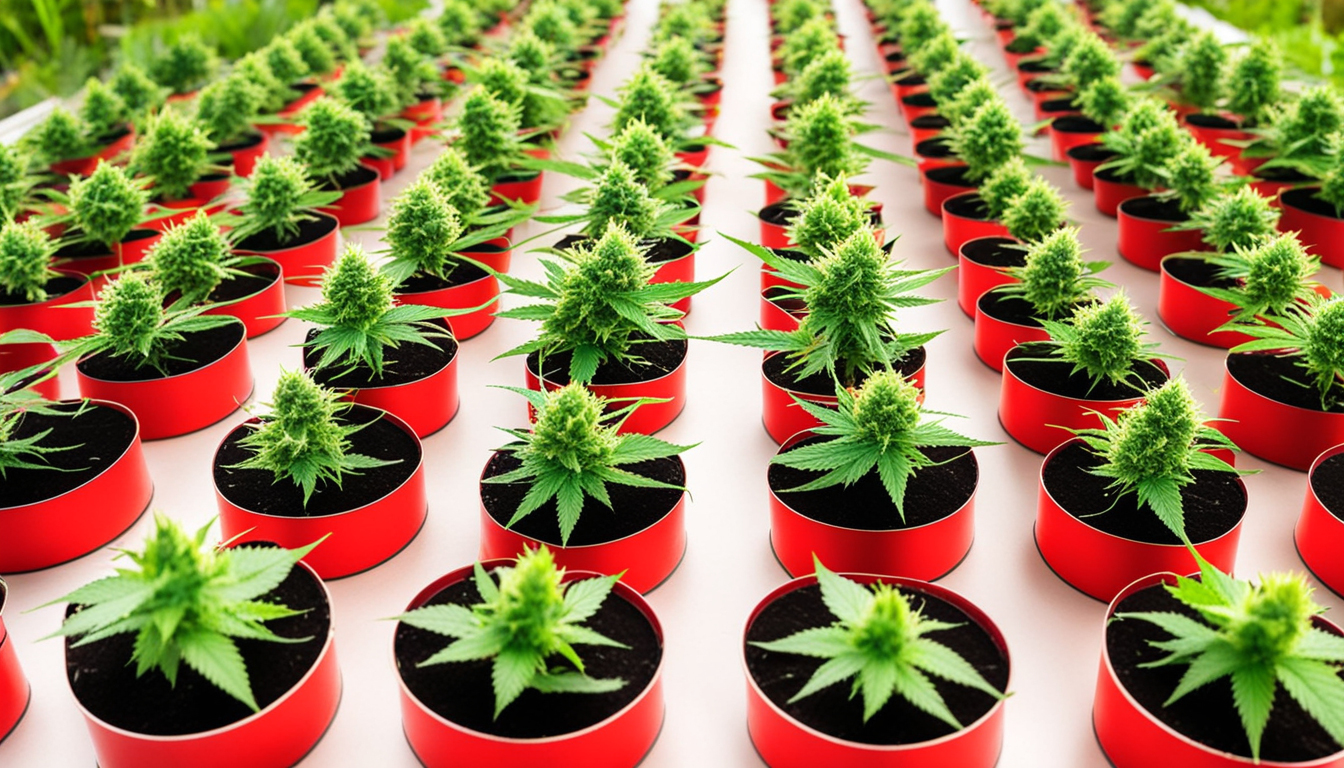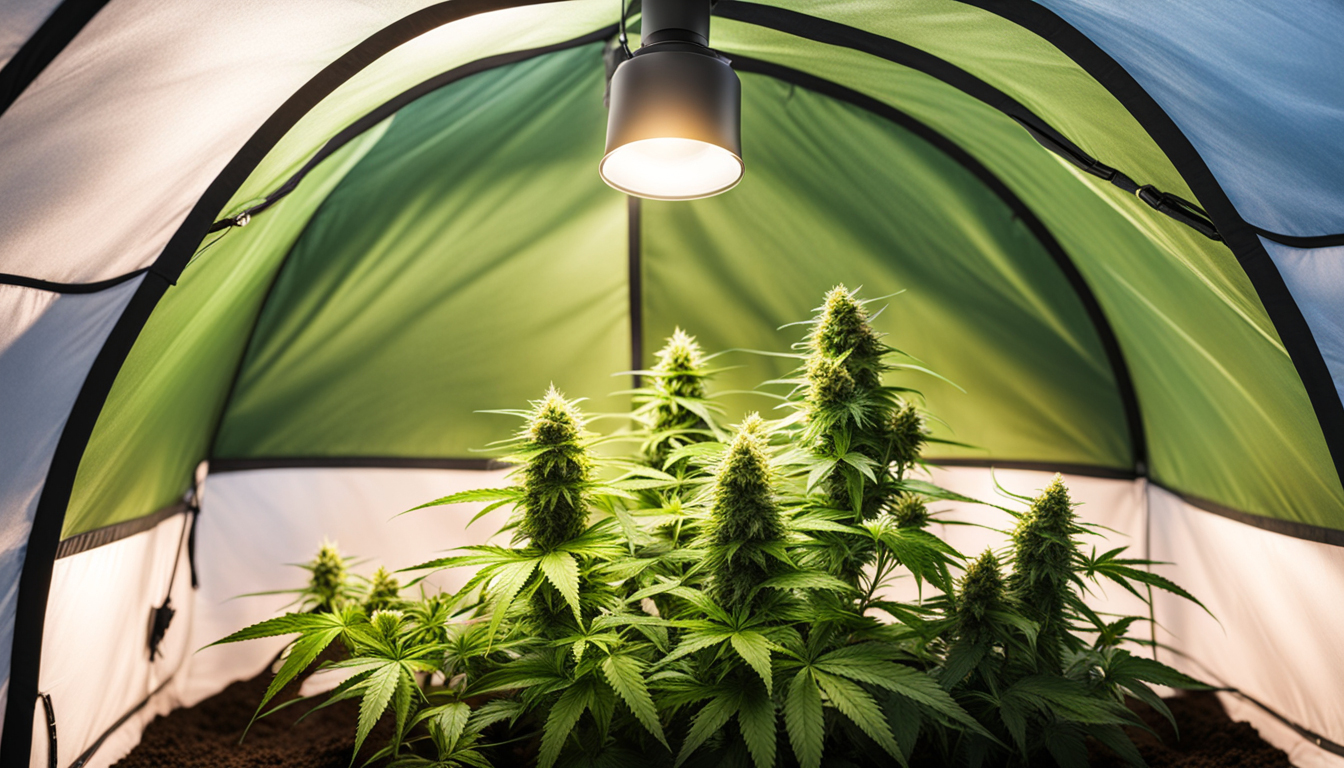
Whether you're beginning weed growing or looking to improve your existing harvest, following this complete guide will help you produce large, high-quality yields right at home. With the right equipment, techniques, and care, cultivating pot indoors can be an extremely rewarding and cost-effective endeavor.
Choosing Cannabis Strains
The first step in planning your indoor crop is selecting the right pot cultivars to cultivate. The three main types of cannabis plants each have their own characteristics.
Sativas
Known for their invigorating intellectual effects, these strains spread tall and slender with narrow leaves. They flourish in hotter tropical climates and have a longer blooming time between 2.5-3 months indoors. Top energizing varieties include Sour Diesel, Durban Poison, and Jack Herer.
Indicas
Indicas provide relaxing full-body effects and spread short and bushy with wide leaves. Accustomed to colder mountain climates, they bloom faster within 2-2.25 months. Popular relaxing varieties include Granddaddy Purple, Northern Lights, and Bubba Kush.
Hybrids
Hybrid strains blend traits from both sativas and indicas. They offer combined effects and have moderate flowering periods around 9-10 weeks. Popular mixes are Blue Dream, OG Kush, and Blue Dream.

Setting Up Your Grow Space
Pot plants need the right controlled environment to succeed. Key factors for indoor farms are lights, airflow, layout, and finding the ideal discreet location.
Location
Choose an unused space with direct access to irrigation and electrical outlets. An empty spare room, large closet, basement corner, or cultivation tent tucked away in a garage all make great hidden grow room spots.
Lights
Marijuana requires strong light for all growth stages. LEDs are efficient and come in full spectrum options mimicking real outdoor light. Provide 15-25 watts per sq. ft for the growth stage and 20-40 watts per sq. ft. for bloom.
Ventilation
Proper ventilation and exhaust systems keep ideal temperature, moisture, and pure CO2 levels. Install low-noise 10-15 cm fans or scrubbers to refresh stale air and reduce odors.
Layout
Maximize your space by arranging plants carefully under the lights and allowing room to reach and work around them. Set up separate zones for growth, bloom, drying, and propagation.

Growing Mediums
Pot can be grown in various mediums, each with benefits and cons. Pick a suitable option for your particular setup and cultivation style.
Soil
The traditional medium, soil is cheap and simple for beginners. It provides excellent flavor but needs more irrigation and fertilizing to feed plants. Amend soil with perlite or coir to improve aeration.
Coconut coir
Made from coconut husks, renewable coco coir retains water but still lets in air to the roots. It's cleaner and more predictable than soil. Use coir-specific fertilizers to prevent calcium buildup.
Water systems
In water systems, plant roots grow right in fertilizer water solution. This enables quick growth but needs close observation of water chemistry. DWC and drip systems are common methods.
Sprouting Seeds
Germination activates your pot seeds to begin growing taproots. This prepares them for transplanting into their cultivation medium.
Paper Towel Method
Place seeds between wet paper towel and keep them moist. Inspect after 2-7 days for emerging taproots showing sprouting is complete.
Direct Planting
Plant seeds right into wetted growing medium 1⁄4 inch deep. Gently water and wait 7-14 days until sprouts push through the top.
Cubic rockwool
Presoak cubic rockwool starters in pH-adjusted water. Place seeds 1⁄4 inch deep into the cubes. Keep cubes Learn More moist until sprouts appear within a week to 2 weeks.
Transplanting Seedlings
Once germinated, pot seedlings need to be transplanted to avoid crowding. Move them into proper sized pots.
Preparing Containers
Fill final containers with growing medium amended with slow-release fertilizer. Let pots to soak up water overnight before transplanting.
Carefully Transplanting
Carefully loosen young roots from sprouting medium using a spoon. Place into prepared container at same depth as before and gently water in.
Growth Stage
The growth stage encourages foliage and plant structure through 3/4 to full day of continual lighting intensity. This stage usually lasts 1-2 months.
Using 18-24 Hours of Light
Use grow lights on a 24 hour cycle or natural sunlight to trigger nonstop growth. Lamp output influences height and node distance.
Nutrients
Use grow stage fertilizers richer in N. Make sure pH stays around 6.5 for proper nutrient absorption. Feed 25-50% concentration after 14 days and strengthen slowly.
LST and topping
Fimming, LST, and trellising direct shoot patterns for even canopies. This increases yields.

Flowering Stage
The flowering stage grows buds as plants reveal their sex under a 12 hour light schedule. It lasts 8-12 weeks depending on variety.
Switching to 12/12
Change grow lights to 12 hours on, 12 hours off or place outside for outdoor 12/12 timing. This signals plants to begin blooming.
Stop Fertilizing
Flushing flushes out fertilizer residuals to improve taste. Feed lightly the first weeks then just use plain water the last 2 weeks.
Flushing
Maintain Click Here 12/12 light timing but flush using neutral pH water only. Return to plain watering if buds aren't mature after two weeks.
Reaping
Knowing when cannabis is completely mature delivers maximum cannabinoid content and aroma. Cut down plants at peak maturity.
Signs of readiness
Check swollen calyxes, faded pistils, and 5-15% cloudy trichs. Check buds around the plant as they won't all ripen evenly.
Harvesting plants
Use sterilized, razor-sharp pruning shears to carefully slice each plant at the base. Leave 5-10cm of stalk attached.
Drying
Suspend intact plants or branches upside down in a lightless room with average temp and RH around 50-60% for 1-2 weeks.
Curing
Curing keeps drying while improving the buds like fine wine. This process mellows harshness and intensifies cannabinoid and terpene profiles.
Curing containers
Trim cured buds from stems and store into sealed containers, filling about 75% capacity. Use a hygrometer to monitor container humidity.
Opening jars daily
Open containers for a few hours daily to gradually lower moisture. Remoisten buds if RH drops below 55%.
Long term storage
After 2-3 weeks when moisture stabilizes around 55-60%, perform a last trim and keep long-term in airtight jars.
Common Problems and Solutions
Even experienced cultivators run into various marijuana plant problems. Identify problems soon and fix them properly to keep a healthy garden.
Poor feeding
Yellowing leaves often signify insufficient nitrogen. Anthocyanins and leaves show low phosphorus. Test pH and increase fertilizers gradually.
Bugs
Spider mites, fungus gnats, mites, and root aphids are frequent cannabis pests. Use neem oil sprays, predator bugs, and sticky traps for organic control.
Mold
High moisture encourages botrytis and bud rot. Improve circulation and circulation while reducing humidity under 50% during flowering.

Summary
With this complete indoor cannabis cultivation guide, you now have the info to cultivate bountiful potent buds for personal grows. Apply these techniques and techniques throughout the seed starting, growth, and bloom stages. Invest in quality equipment and closely check on your plants. In time, you'll be compensated cannabisgrowguide.net with sticky aromatic buds you grew yourself under the loving care of your green hands. Good luck cultivating!